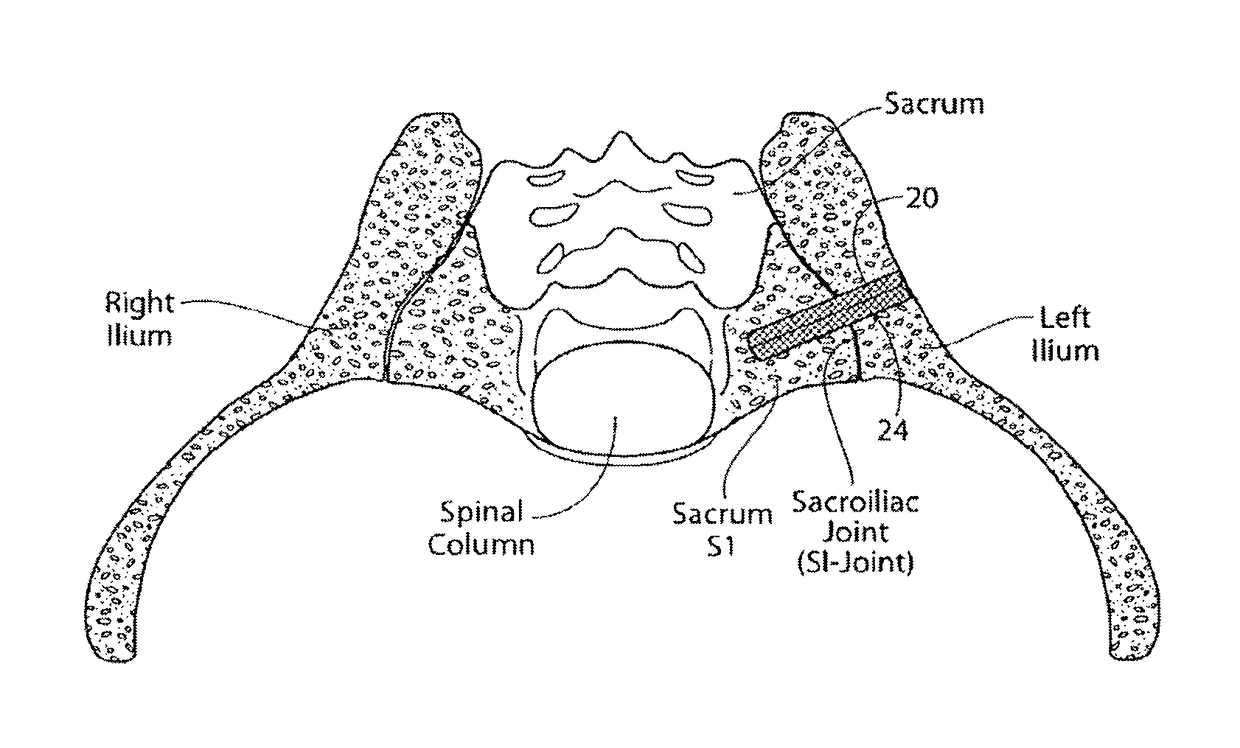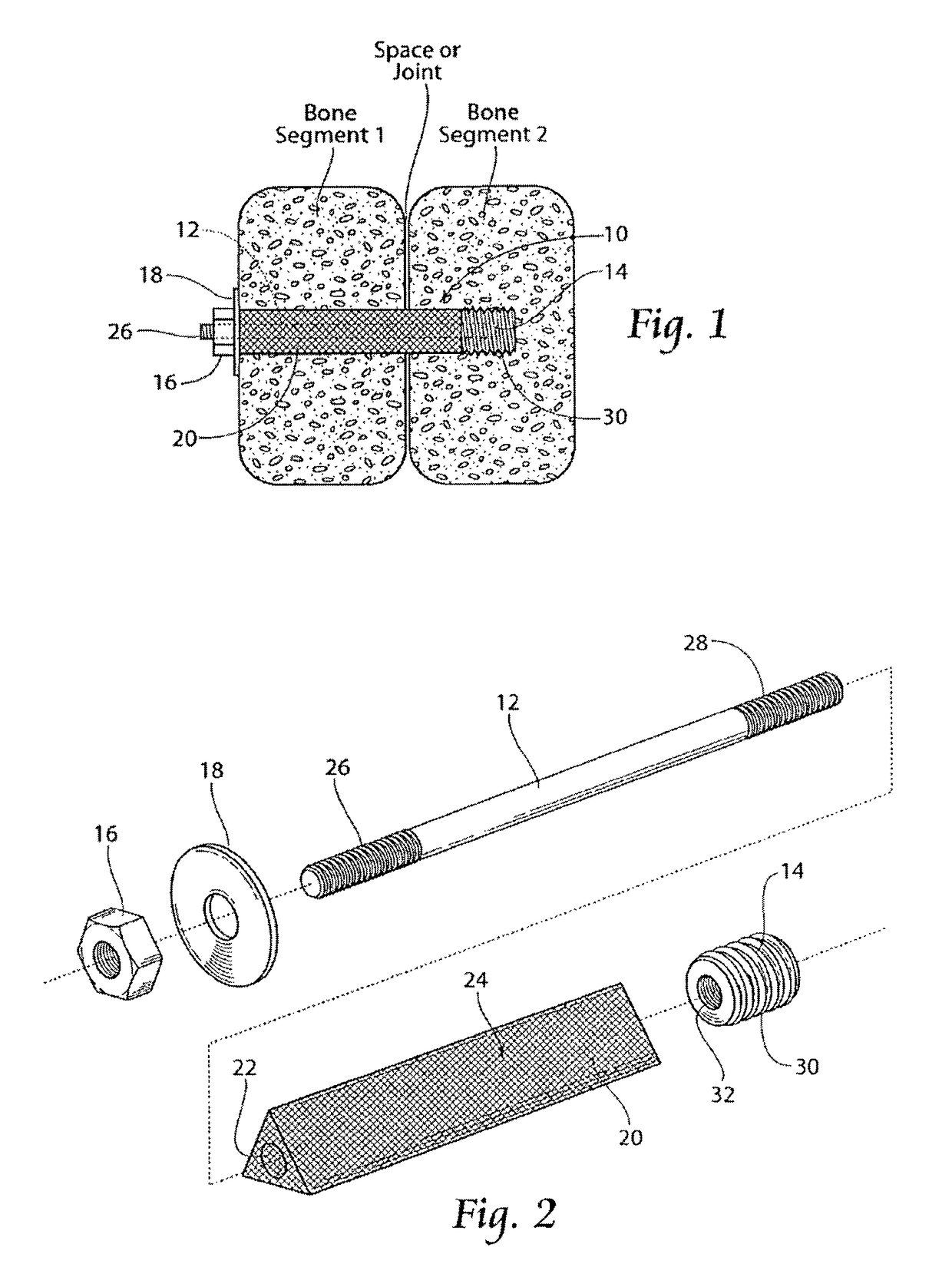Apparatus, systems, and methods for the fixation or fusion of bone
a technology of fixation or fusion, applied in the field of bone fixation or fusion, can solve the problems of too much movement between two vertebrae, affecting the ability of each spinal segment to bear weight, so as to speed up the fusion and/or stabilization process, reduce the risk of fracture, and reduce the effect of incision
- Summary
- Abstract
- Description
- Claims
- Application Information
AI Technical Summary
Benefits of technology
Problems solved by technology
Method used
Image
Examples
Embodiment Construction
[0073]Although the disclosure hereof is detailed and exact to enable those skilled in the art to practice the invention, the physical embodiments herein disclosed merely exemplify the invention that may be embodied in other specific structure. While the preferred embodiment has been described, the details may be changed without departing from the invention, which is defined by the claims.
Part I
[0074]The following describes embodiments of the invention for use in the fixation or fusion of the SI-joint and other bone segments or joints.
I. The Compression Stem Assembly
[0075]FIGS. 1 and 2 show in assembled and exploded views, respectively, a representative configuration of a compression stem assembly 10 sized and configured for the fixation of bone fractures (i.e., fixation of parts of the same bone) or for the fixation of bones which are to be fused (arthrodesed) (i.e. fixation of two or more individual bones that are adjacent and / or jointed). For the sake of shorthand, the assembly 10...
PUM
| Property | Measurement | Unit |
|---|---|---|
| diameter | aaaaa | aaaaa |
| diameters | aaaaa | aaaaa |
| diameters | aaaaa | aaaaa |
Abstract
Description
Claims
Application Information
 Login to View More
Login to View More - R&D
- Intellectual Property
- Life Sciences
- Materials
- Tech Scout
- Unparalleled Data Quality
- Higher Quality Content
- 60% Fewer Hallucinations
Browse by: Latest US Patents, China's latest patents, Technical Efficacy Thesaurus, Application Domain, Technology Topic, Popular Technical Reports.
© 2025 PatSnap. All rights reserved.Legal|Privacy policy|Modern Slavery Act Transparency Statement|Sitemap|About US| Contact US: help@patsnap.com



